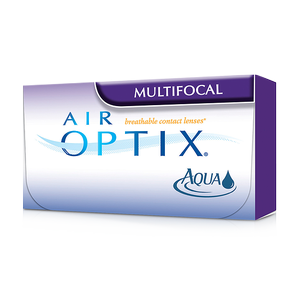
If you are over 40 and have difficulty seeing close up, you probably have a common age-related condition called presbyopia which is when the eye’s natural lens loses the ability to focus on close objects. Presbyopia is a natural process that occurs as the eye ages and affects the majority of people from age 40 and upward. Individuals with presbyopia are often familiar with the need to hold reading materials such as newspapers an arm’s length away from their eyes in order to see clearly, yet reading glasses with bifocal or multifocal (such as progressive) lenses can help.
Fortunately for those who don’t like the look, feel or inconvenience of reading glasses, there is another option. Bifocal and multifocal lenses are also available in contact lenses in both soft and Rigid Gas Permeable (RGP) varieties.
Multifocal contact lenses give you added freedom over glasses and they allow you to be able to view any direction - up, down and to the sides - with similar vision. People wearing progressive lenses in glasses on the other hand have to look over their glasses if they want to view upwards or into the distance.
Multifocal contact lenses are generally designed in one of two ways, as either simultaneous vision lenses or alternating vision lenses.
Simultaneous Vision Lenses
The most popular version of multifocal contact lenses, simultaneous vision lenses present the distance and near vision zones of the lens at the same time. Typically after a short adjustment period your eyes learn to utilize the segment of the lens that they need to focus on the desired object and essentially ignore the other.
Translating or Alternating Vision lenses
Similar to bifocal eyeglass lenses, these contacts are divided into distinct areas or zones and your pupil will move to the desired zone depending on your vision needs. Typically the top of the lens, which is what you look through when looking straight ahead is for distance vision and the bottom area (what you look through when you look down) is for near vision. However, this can be reversed according to unique vision needs.
An Alternative Option to Multifocal Contact Lenses: Monovision
Monovision is another contact lens alternative for presbyopia particularly if you are having difficulty adapting to multifocal lenses. Monovision splits your distance and near vision between your eyes, using your dominant eye for distance vision and your non-dominant eye for near vision.
Typically you will use single vision lenses in each eye however sometimes the dominant eye will use a single vision lens while a multifocal lens will be used in the other eye for intermediate and near vision. This is called modified monovision. Your eye doctor will perform a test to determine which type of lens is best suited for each eye and optimal vision.
Are Contact Lenses Right for You?
If you have presbyopia, contact lenses may be a great option for you. Many people prefer the look and convenience of contact lenses over traditional reading glasses. Speak to your eye doctor about the options available to you.

